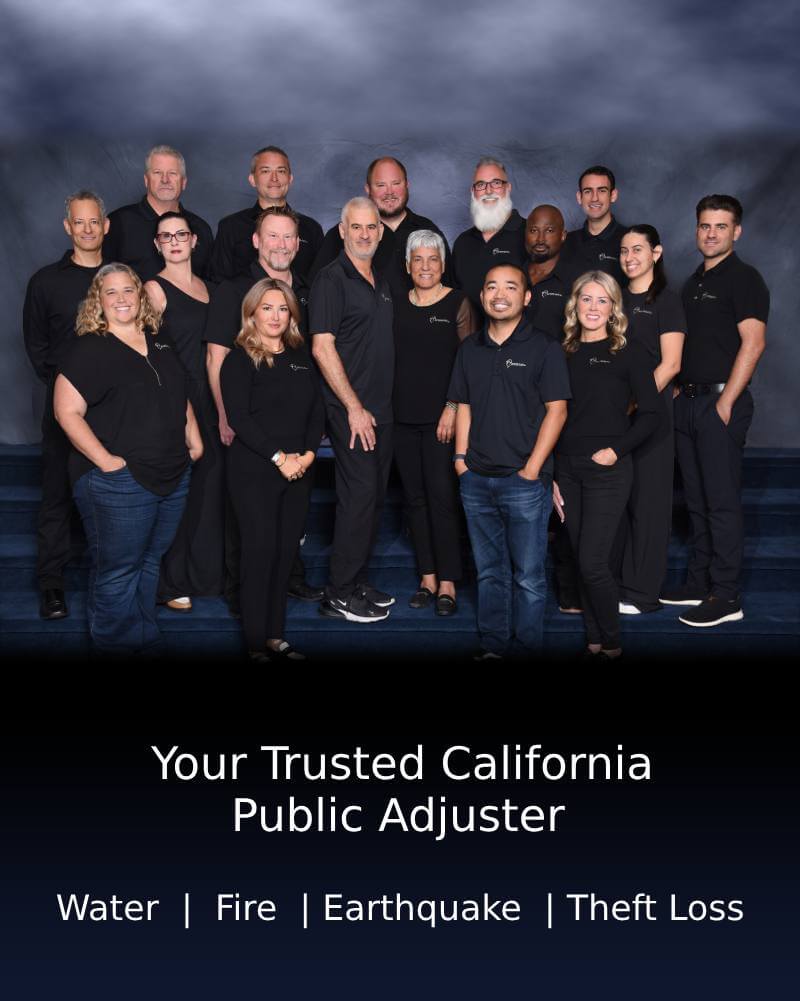
Commercial Water Damage in the City of Commerce
For over 20 years, I’ve represented homeowners in front of large insurance companies. I spend my days assisting my clients in the preparation, presentation, negotiation, and adjustment of their insurance claims. Today, I’m sharing an experience I had while handling a commercial water damage claim in the City of Commerce.
How did you first become involved with this claim?
I was called in by a past client who owned a large warehouse in the City of Commerce. A few years prior, I’d worked with this client on a commercial water damage claim. This time, his case was much more complicated.
What kind of water damage did they have?
They were dealing with extensive flooding. The warehouse was over 100,000 square feet in total, and nearly 2/3rds of the warehouse had flooded. We discovered that the source of the damage was a cracked water pipe. The warehouse had a slab foundation, and the sprinkler water supply line was built beneath it. The broken pipe normally fed into the sprinkler system, but in this case, it caused flooding from underneath the slab.
How did the insurance company approach the problem?
The insurance company wanted to send someone to the warehouse to begin the drying process. The restoration company was told to suck the water out and use drying equipment. Unfortunately, they didn’t take into consideration the water quality. You see, because the flood water had risen from below the foundation, it could be contaminated. At this point, I insisted that we run tests on the dirt that was driven up by the flooding. The insurance company dispatched special hygienists to collect samples. When the results were in, we discovered that there were toxins in the water.
Does the damage restoration process change if the water contains toxins?
When the structure has been contaminated, the restoration company must follow special guidelines for cleanup. This helps to protect the employees of the restoration company, as well as the employees of the warehouse. After the test results came back, we were able to enforce those guidelines. However, there were still some disputes to resolve before we could reach a settlement.
What was standing in the way of the settlement?
After we came to an agreement on the cleaning protocol, we had to address how the pipe would be repaired. In order to comply with new building codes, we had two options for the repairs. We could uproot the slab foundation, replace the existing system, and lay a new foundation on top of the repaired piping. We could also run another pipe above the ground, but we would still need to open the slab to repair the damage. When you open a slab foundation, it requires a lot of reinforcement to bring it back to normal levels of stability. Both options were extremely expensive.
How did you decide what to do?
Ultimately, our role is to advocate for our clients. This client did not have a strong preference for the repairs, provided that the warehouse could be returned to a pre-loss condition. His primary concern was the loss of income.
How did the water damage cause a loss of income?
The warehouse was primarily used for manufacturing, storage, and shipping. The manufactured products contained metal, as did the manufacturing equipment. Although we were working to resolve the claim quickly, we could not prevent rust from forming. Moisture damaged the manufacturing equipment as well as inventory, and the shipping department was shut down because of the contamination.
The loss of inventory and damage to the equipment was a serious problem for the owner. We worked with the insurance company to determine whether metal components in his machinery had rusted and whether the water had caused secondary electrical damage.
How was this case resolved?
In the end, the insurance company uprooted the slab foundation and replaced the sprinkler system below. My client was compensated for his lost inventory, and his settlement covered the cost of inspecting and repairing the damaged equipment.
Water damage often creates a domino effect, leaving property owners to face unexpected secondary damage. Fortunately, my client had a comprehensive insurance policy, and he was able to obtain a settlement for his lost inventory. This case stands out in my memory as a particularly good example of the value of having a public adjuster on your side.



































